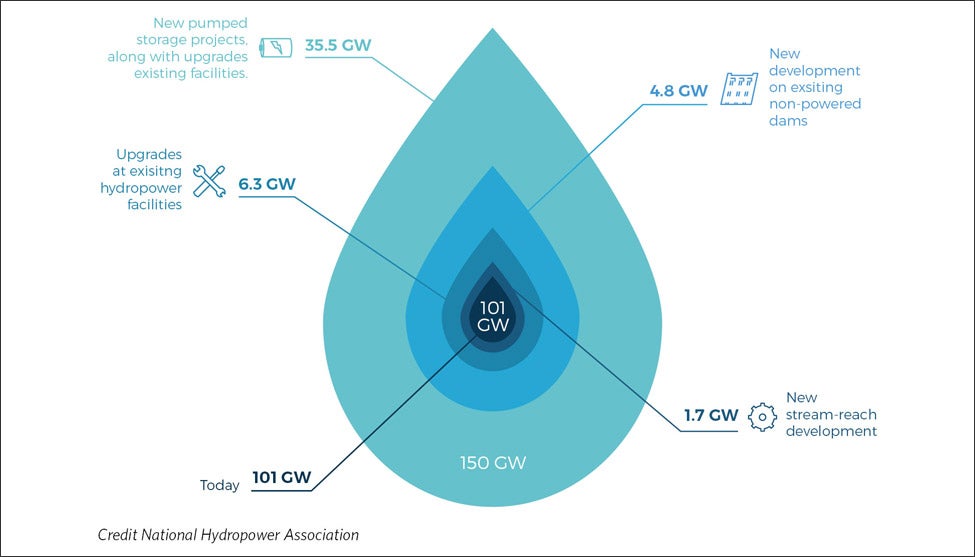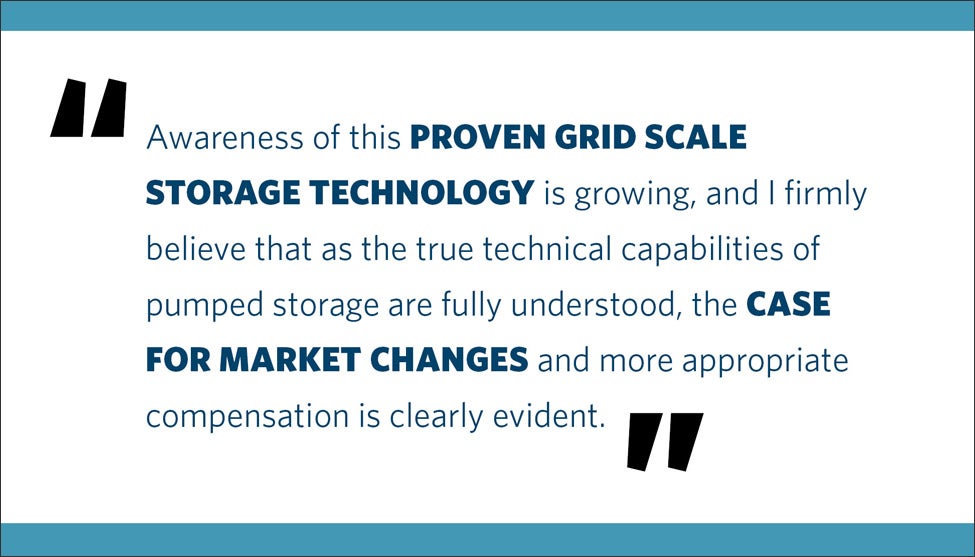
Pumped Storage: The 50-year-old Overnight Sensation
Pumped storage provides huge benefits for our U.S. energy supply — it adds to grid reliability, it’s flexible and it reduces carbon emissions through more efficient grid operations. I’m excited there’s some buzz around pumped storage right now, because I’m passionate about encouraging changes for the hydropower industry, like proper valuation and compensation for pumped storage as part of our nation’s energy supply.
Having managed the operations and grid integration of 2000 MW of pumped storage, including the commissioning of a 1400 MW project in 1991, it became apparent to me the value of flexibility of thousands of MW and MWh to a balancing authority. And now that energy storage is perceived to be the Holy Grail for wind and solar, it seems that what was once old is now new and alluring again. Pumped storage has been providing those very much needed Holy Grail capabilities for decades!
The DOE Hydropower Vision Report supports and defines the future of pumped storage with some eye-opening statistics. Based on investigations of a range of growth scenarios, the report quantifies potential pumped storage growth in both the near term (to 2030), by 16.2 GW, and in the longer term (to 2050), by an additional 19.3 GW, for a total of 35.5 GW deployed by 2050.

Equally important, the DOE determined pumped storage growth potential is correlated to, and facilitates growth, primarily by modeled growth in other variable renewable generation sources like wind and solar. It all works together! The inherent flexibility of pumped storage is highly valuable in its ability to provide needed operating reserves and other essential grid reliability services.
But the challenge lies in the fact that pumped storage isn’t properly valued, which the DOE documents. And its valuation is ultimately stifling project deployment. Put simply, the resources are there, the environmentally benign sites are there, and the valuation question is critical to unlocking this potential.
While pumped storage growth potential is available, energy policy, regulatory and market reforms are needed in order to fully realize the potential. Hydropower faces competitive disadvantages in the marketplace versus other energy storage technologies ranging from preference state tax benefits to market procurement policies that specifically limit or exclude pumped storage. This inequity doesn’t serve the industry, project developers, customers or those responsible for maintaining the electric power grid.
We’re making headway, albeit slowly. At a November FERC Technical Conference, the FERC examined the utilisation of energy storage and issues surrounding compensation for energy storage providers. I listened firsthand to the discussions about the recognition of pumped storage’s benefits, but it also appeared to me the FERC’s perception is that the 1995 Norton decision seemed to address the market treatment for large scale storage (both pumped storage and compressed air). The discussions evolved into what can the FERC do to incentivise/compensate battery scale technologies.

Awareness of this proven grid scale storage technology is growing, and I firmly believe that as the true technical capabilities of pumped storage are fully understood, the case for market changes and more appropriate compensation is clearly evident. Grid operators understood that fifty years ago, so let’s keep banging that drum to the RTO/ISO community, utility commissions
and the FERC.
Coming to the table with proven statistics from the DOE Hydropower Vision Report will only make our case stronger. Find the proof points you need by looking at the webinar and handout prepared by Dave Culligan, who led the industry’s representation on DOE’s Core Team for initiative, and I for a quick breakdown the report’s contents. Or reach out and we can talk.




